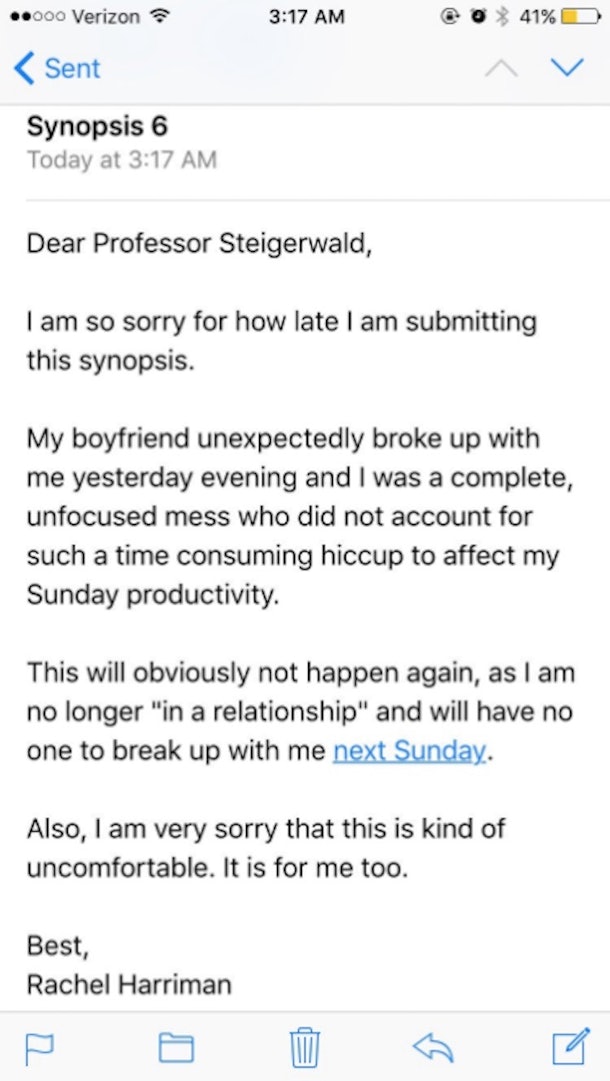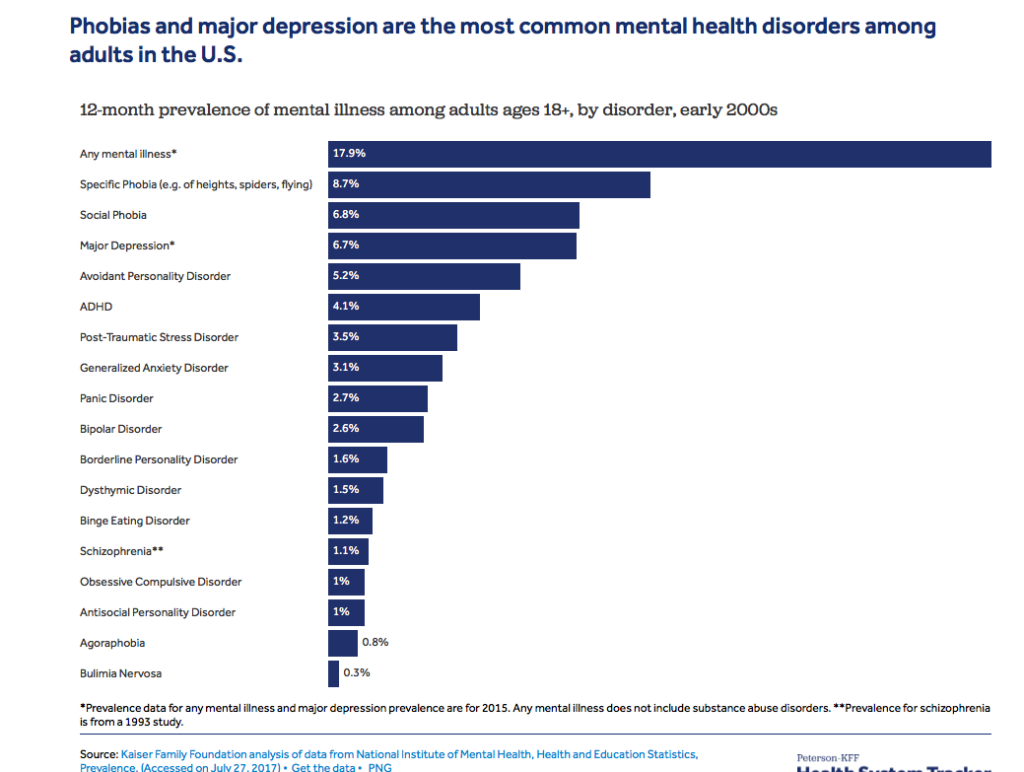But first, a quick laugh. A few years ago, a story about one Ohio State student’s honestly went viral. After going through an unexpected break-up halted her productivity, she sent her professor this email.

When she posted a screenshot of the email on Twitter, it immediately got the attention of the public and received over 2,000 retweets and 15,000 likes. While the humor is endearing, the attention this post received attests to something else: we’ve all been there.
Sometimes, life just gets in the way of our responsibilities and unexpected emotional distress makes it feel impossible to focus on school or work. That debilitating feeling, however, is even more intense for those of us with mental health issues.
To put this issue into context, a recent study by the American College Health Association found that nearly 1 in 4 U.S. college students reported being diagnosed with a mental illness. Additionally, almost 9 out of 10 undergraduate students reported feeling overwhelmed by all they had to do and nearly half of all college students have felt so depressed that it was difficult to function.
Okay Gigi, college students are stressed. What else is new. While these statistics may seem like a non-starter, it is crucial to realize that a degree is not a cure-all for mental health issues. In fact, almost half of U.S. adults will experience a mental illness over the course of their lifetime and depression is the leading cause of disability for adults around the world. These numbers make it clear that we are in the midst of a mental health epidemic and that same sentiment is echoed by the economic impact of these mental health issues.

As it turns out, mental health is one of the costliest forms of sickness for the U.S. economy. One analysis of data from 2008 to 2014 found that “a single extra poor mental health day in a month was associated with a 1.84 percent drop in the per capita real income growth rate, resulting in $53 billion less total income each year” (ScienceDaily.com). To reiterate, that’s $53 billion lost from adding a single poor mental health day to workers’ normal schedules. And these numbers are only expected to grow. Researchers also noted that “the global economic cost of mental illness is expected to be more than $16 trillion over the next 20 years, which is more than the cost of any other non-communicable disease” (ScienceDaily.com).

A study published in Science & Society breaks down these economic figures further, outlining the different approaches in which the economic impact of mental health issues can be evaluated. The approach I will zero in on is the Human Capital approach, which combines the direct, “visible” costs of mental illness and the indirect, “invisible” costs. “Visible costs” are what comes to mind when we think about financing illness; this includes things like medication, therapist visits, and hospitalization costs. The indirect or “invisible” costs account for “income losses due to mortality, disability, and care seeking, including lost production due to work absence or early retirement” (National Center for Biotechnology Information). This study found that the direct and indirect costs of mental disorders were estimated to amount to $2.5 trillion, where “the indirect costs (US$1.7 trillion) are much higher than the direct costs (US$0.8 trillion)” unlike other leading diseases such as heart diseases and cancer, which the graphs below illustrate (National Center for Biotechnology Information). Additionally, both of these numbers are expected to double by 2030.

The Human Capital approach is just one way of quantifying the economic impact of mental illness, but the message is clear: mental health issues are costing the economy billions and will only continue to do so if nothing is done. This should be motivation for workplaces to implement mental health protocols and resources. If companies discussed mental health issues freely and provided their employees with adequate mental health resources, employees would presumably be happier, more productive, and more engaged with their work. Investing in mental health is key to solving the current epidemic facing the world’s adult population, and as someone who wants to be a therapist in the coming years, I can only hope that others are as serious about making this investment as I am.
